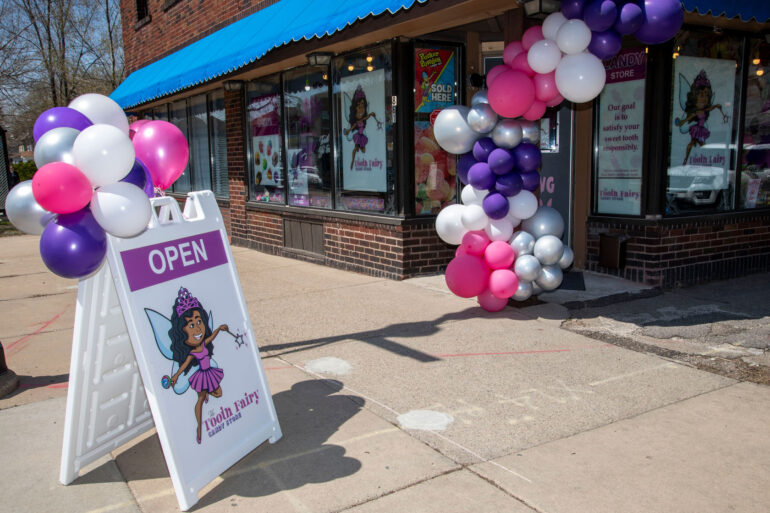Recent surges in startups and other forms of business creation are key signs of the economy’s strong recovery following the COVID-19 pandemic recession. Before the pandemic, economists and policymakers worried that a series of metrics such as a falling share of businesses that are less than 1 year old demonstrated a slowdown in new business creation. Evidence since 2021 suggests that these troubling signs have reversed themselves and that we are in the midst of a startup boom. This boom in business formation could be meaningful for local economies: More new businesses can lead to more job creation, faster productivity growth, and stronger wage growth. New businesses can also increase competition and decrease corporate concentration, boosting wages and reducing prices. Existing research first identified this surge in entrepreneurship and business formation, and new analysis from the Center for American Progress with a specific focus on state and county data finds that: Entrepreneurs filed 5.2 million “likely employer” business applications between January 2021 and December 2023, slightly more than a one-third increase compared with the number of applications filed between 2017 and 2019. Entrepreneurs filed 450,000 likely employer applications in the fourth quarter of 2023, a 37 percent increase over the fourth quarter of 2019. The number of startups—businesses under 1 year old—surged in 2022 and 2023, surpassing pre-Great Recession levels for the first time. The number of business establishments grew in more than 8 in 10 counties nationwide between 2019 and 2023. This strong economic recovery—which the Biden administration’s American Rescue Plan helped deliver—has created an attractive environment to start and grow a business. Some evidence suggests that pandemic relief such as the American Rescue Plan may have also contributed to the surge in entrepreneurship; this surge was seen especially in ZIP codes with large Black populations, and the Black business ownership rate more than doubled between 2019 and 2022. The American Rescue Plan, the CHIPS and Science Act, and the Inflation Reduction Act also contain provisions helping small and disadvantaged businesses that could help propel this surge in business creation over the next decade. A post-recession application boom A surge in applications to start new businesses is a strong signal that the economy is bouncing back from the pandemic-era recession. But do these increased applications truly represent new businesses, or could they also reflect forms of self-employment, such as being a ride-sharing driver? Fortunately, the U.S. Census Bureau measures a subset of applications that, based on historical patterns, are “likely employers,” meaning they are likely to become businesses with paid employees. Historically, a 1 percent increase in these likely employer business applications within a state leads to roughly a 1 percent increase in new businesses employing workers within two years. Nationally, the total number of likely employer business applications from 2021 to 2023 was 5.2 million—a 1.3 million, or 34 percent, increase compared with the three years preceding the pandemic, 2017 to 2019. Every state and Washington, D.C., saw an increase in likely employer applications, with Wyoming seeing the highest, at a 93 percent increase, and Alaska seeing the lowest, at a 15 percent increase. The total number of likely employer business applications from 2021 to 2023 was 5.2 million. This boom shows no sign of slowing down Likely employer applications reached 450,000 in the last quarter of 2023—120,000, or 37 percent, more than in the last quarter of 2019—showing that the surge is still continuing three years after the first COVID-19 vaccines were administered. Likely employer applications were not growing anywhere near this rate before the pandemic; they grew only 11 percent between the fourth quarter of 2015 and the fourth quarter of 2019. The sharp uptick in likely employer business applications is also a nationwide phenomenon: In all but one state, likely employer business applications in the fourth quarter of 2023 were higher than in the fourth quarter of 2019. The state with the largest sustained percentage increase in employer applications over this period of time was Colorado, at 116 percent. (see Figure 2) Business applications converting into business startups The data also suggest that the burst of business applications is leading to actual business formation. Nationally, the number of startups—firms that are under 1 year old—increased by 16 percent between 2019 and 2023, which is more than 2 1/2 times the 2015–2019 growth rate of 6 percent. Importantly, the number did not fall noticeably in 2020 and 2021, so the surge is not simply making up for pandemic-era losses. Nevertheless, essentially all of the growth occurred in 2022 and 2023. This surge in startup activity is returning to levels not seen since the Great Recession, during which the number of startups collapsed from 450,000 in 2006 to 320,000 in 2010. By 2019, it had recovered to only 410,000. It surged to 480,000 in 2022 and 2023, surpassing its pre-Great Recession levels for the first time. (see Figure 3) Looking at the number of startups on a per capita basis similarly shows that the number of startups in 2022 and 2023 was essentially at its pre-Great Recession level, though it remained below its late-1990s level. The surge in startups has occurred across states as well. Between 2019 and 2023, the number of startups increased in 47 states and Washington, D.C., compared with only 34 states seeing increases between 2015 and 2019. And 40 states had faster startup growth between 2019 and 2023 compared with between 2015 and 2019. (see Figure 4) The three states with the fastest startup growth—Alabama at 65 percent, West Virginia at 62 percent, and Connecticut at 61 percent—illustrate the widespread nature of the startup boom. Business establishment growth at the county level is also soaring Startup data are not available at the county level, but the U.S. Bureau of Labor Statistics provides data on the number of business establishments. The difference is that the startup data show truly new businesses while data on the number of business establishments count multiple branches of an existing business; for example, a new outlet of a retail chain counts as a new business establishment. Nevertheless, the establishment and firm data track each other closely on a national level, and new establishments are a key source for job growth. The explosion of business establishments is a nationwide trend: Between 2019 and 2023, 2,652 out of 3,141 counties, or 85 percent, showed positive net business establishment growth. (see Figure 5) Looking at the 100 largest U.S. counties, Georgia’s Fulton County, which contains Atlanta, saw the fastest business establishment growth between 2019 and 2023, at 48 percent. Georgia holds four of the 10 large counties with the fastest business establishment growth: Fulton, DeKalb, Gwinnett, and Cobb counties. North Carolina’s Wake County, which contains Raleigh, had the second-fastest growth, and Mecklenburg County, which contains Charlotte, had the fifth-fastest growth. Tennessee’s Davidson County, which contains Nashville; Utah’s Salt Lake County, which contains Salt Lake City; Florida’s Hillsborough County, which contains Tampa; and Arizona’s Maricopa County, which contains Phoenix, were also in the top 10 nationally. (see Table 1) Biden administration policies have likely contributed to this surge in business creation The reasons for this business creation surge are not completely understood, though evidence suggests that changes to work and lifestyle since the onset of the pandemic may have played a role. But the impacts of public policy—in particular the strong economic recovery and tight labor market resulting from the American Rescue Plan—have also likely contributed. The American Rescue Plan, passed in March 2021, supported families, workers, and businesses during a health and economic crisis. It also helped deliver an economic boom with inflation-adjusted gross domestic product (GDP) above pre-pandemic projections. Research shows that startups are especially sensitive to the strength of the economy, so the strong, swift recovery has likely played an important role in the startup and business formation boom. A backdrop of two years of the unemployment rate being below 4 percent, inflation-adjusted wealth above pre-pandemic levels across the wealth distribution, and strong consumer spending has created an attractive environment for starting or expanding a business. The American Rescue Plan and other pandemic-era support for workers and families may have also helped launch this boom by increasing the wealth of would-be entrepreneurs—providing them the resources to start a business and reducing the financial risk of business failure. One study found a surge in business registrations in ZIP codes with large Black populations in 2020 and that those registrations were closely tied to the rollout of pandemic relief funds. Perhaps not coincidentally, the Black business ownership rate more than doubled from 5 percent to 11 percent between 2019 and 2022. Finally, the Biden administration has enacted a suite of policies directly targeting small-business formation and expansion, including a $10 billion American Rescue Plan investment that launched and expanded capital access programs for 100,000 small businesses, expanding and making permanent the Minority Business Development Agency, and using federal contracting and Small Business Administration tools to support small businesses. The Inflation Reduction Act and the CHIPS and Science Act contain provisions to help small and disadvantaged businesses that will continue to spur new business creation in the country’s growing clean energy, semiconductor, and other key sectors. Indeed, some of the strongest growth in both business applications and business establishment growth has been in the STEM-heavy professional, scientific, and technical services sector. Conclusion The strong economic recovery since 2021—in part a result of the American Rescue Plan—has helped deliver a surge of business application, startup, and business establishment growth throughout the country. This boom could reverse decades of stagnant business formation, generating even more job creation, productivity growth, and wage growth over the coming years.
This content was originally published here.


